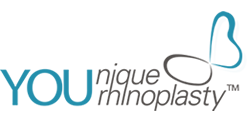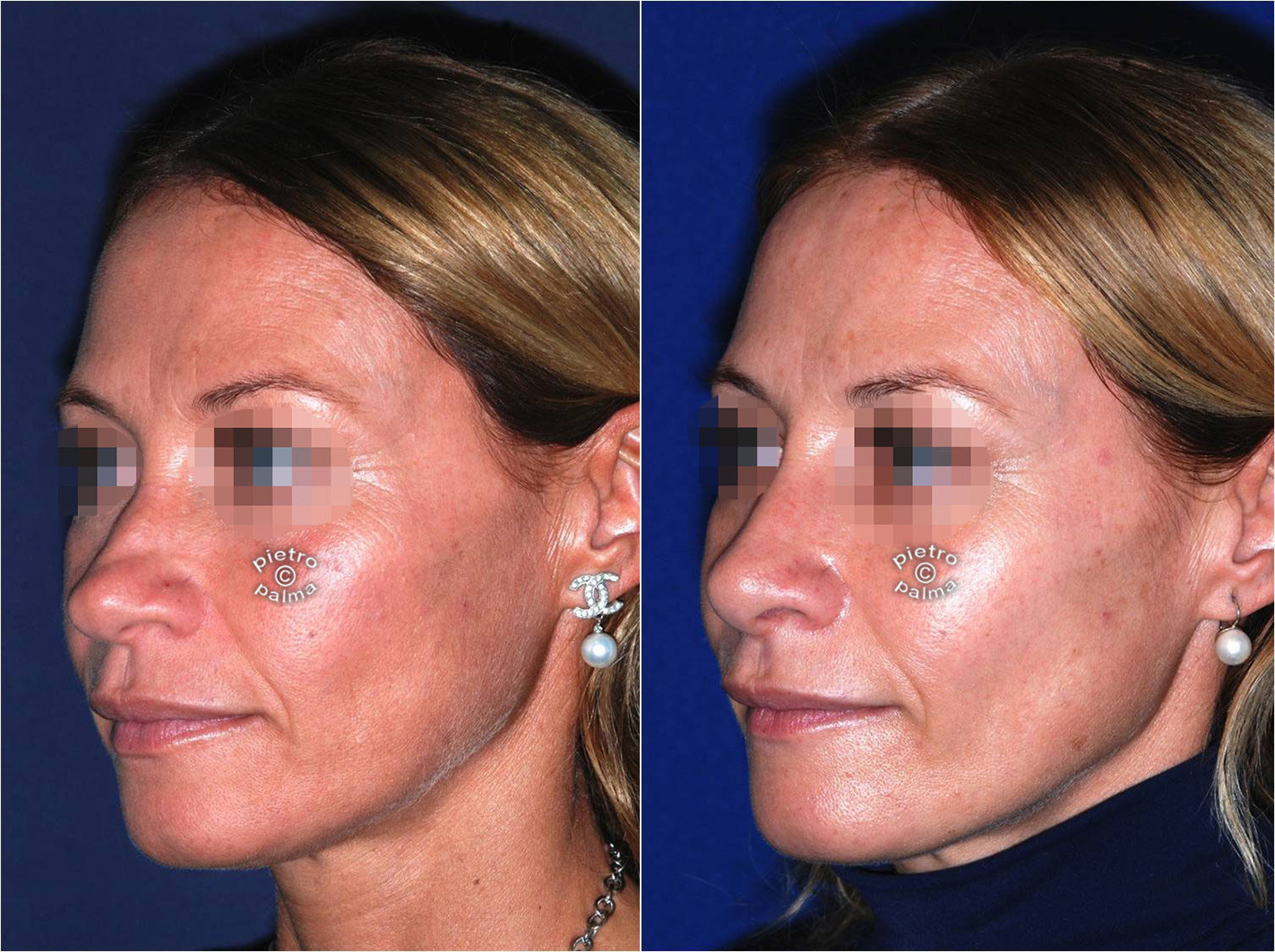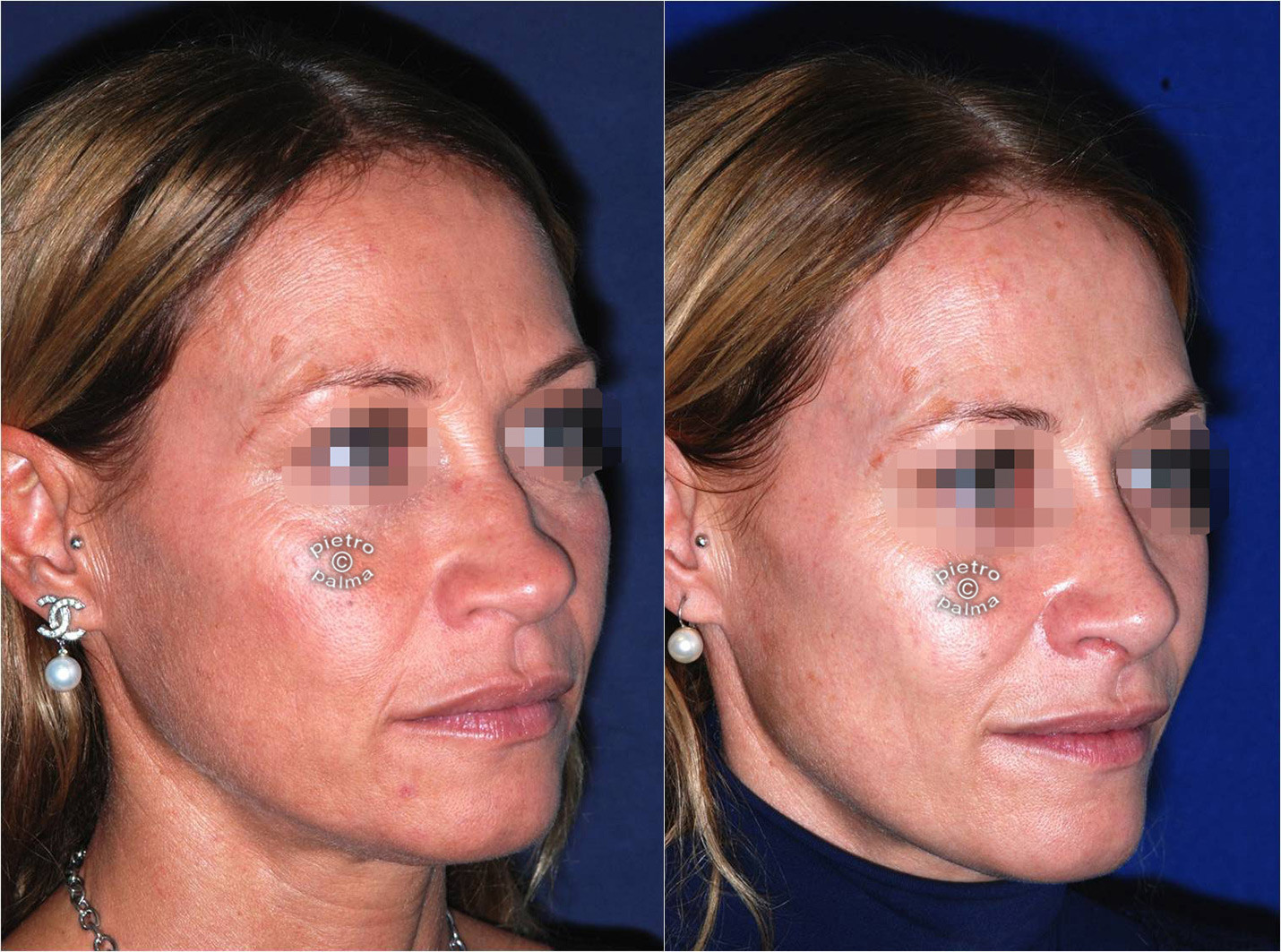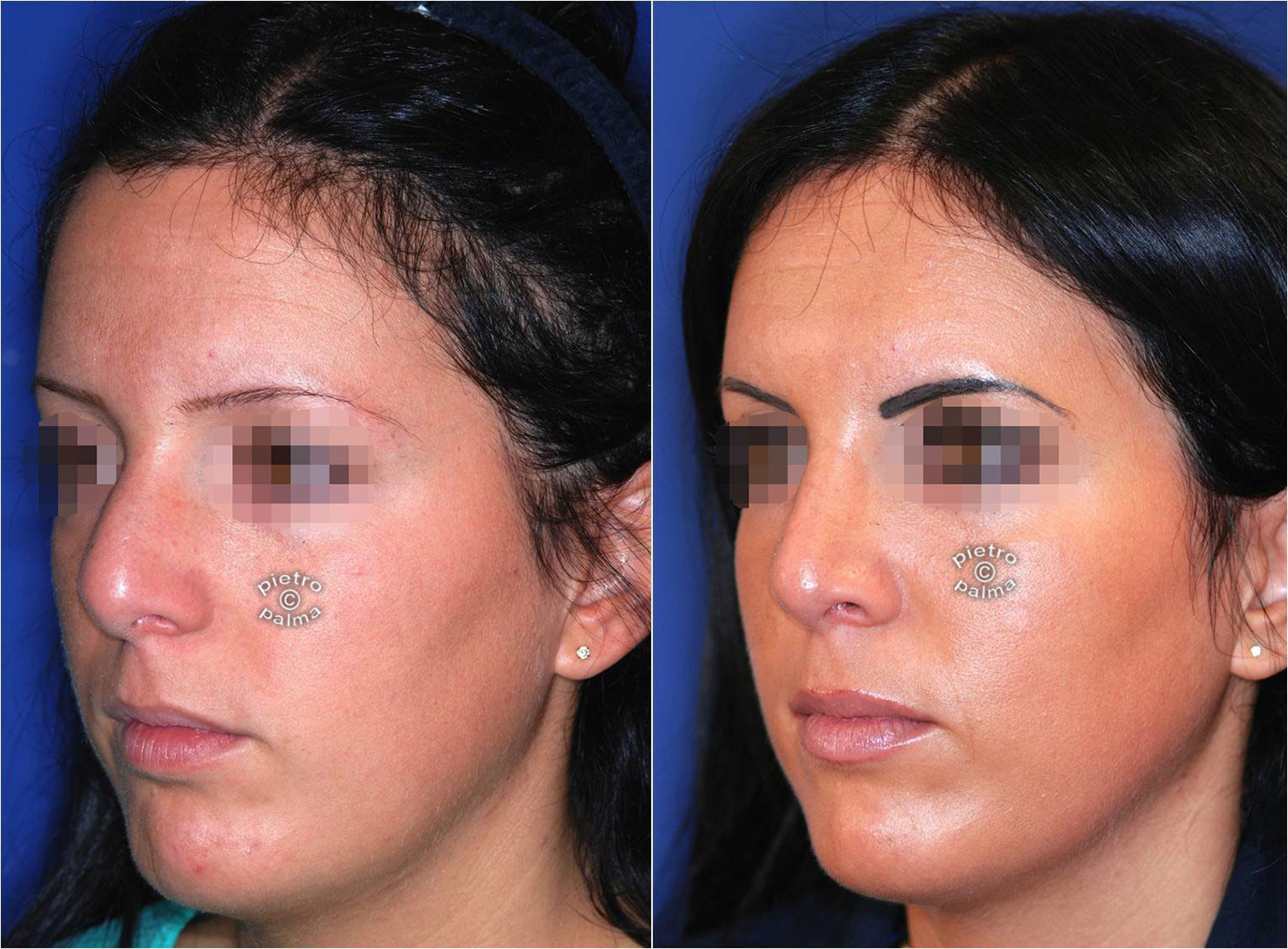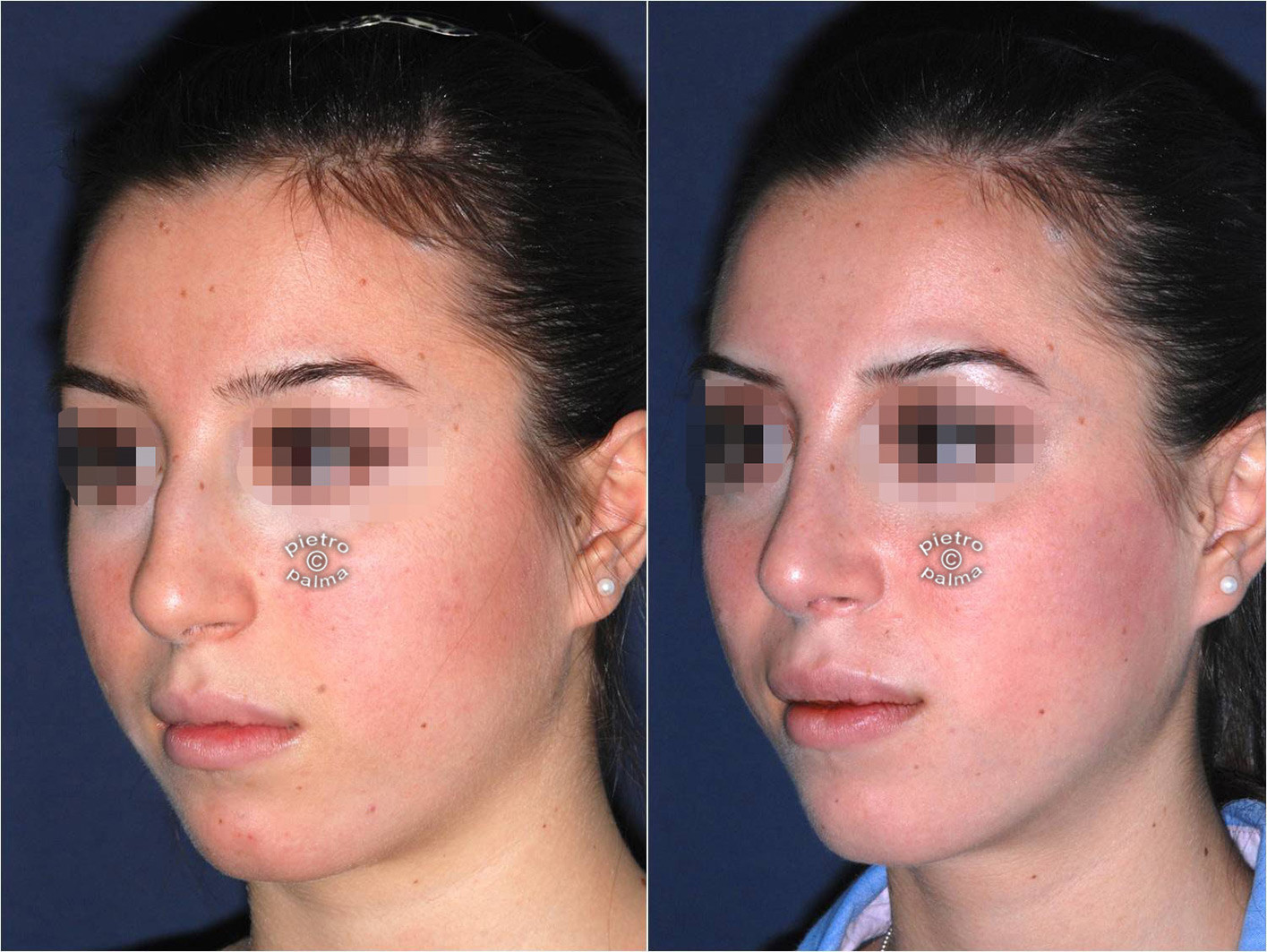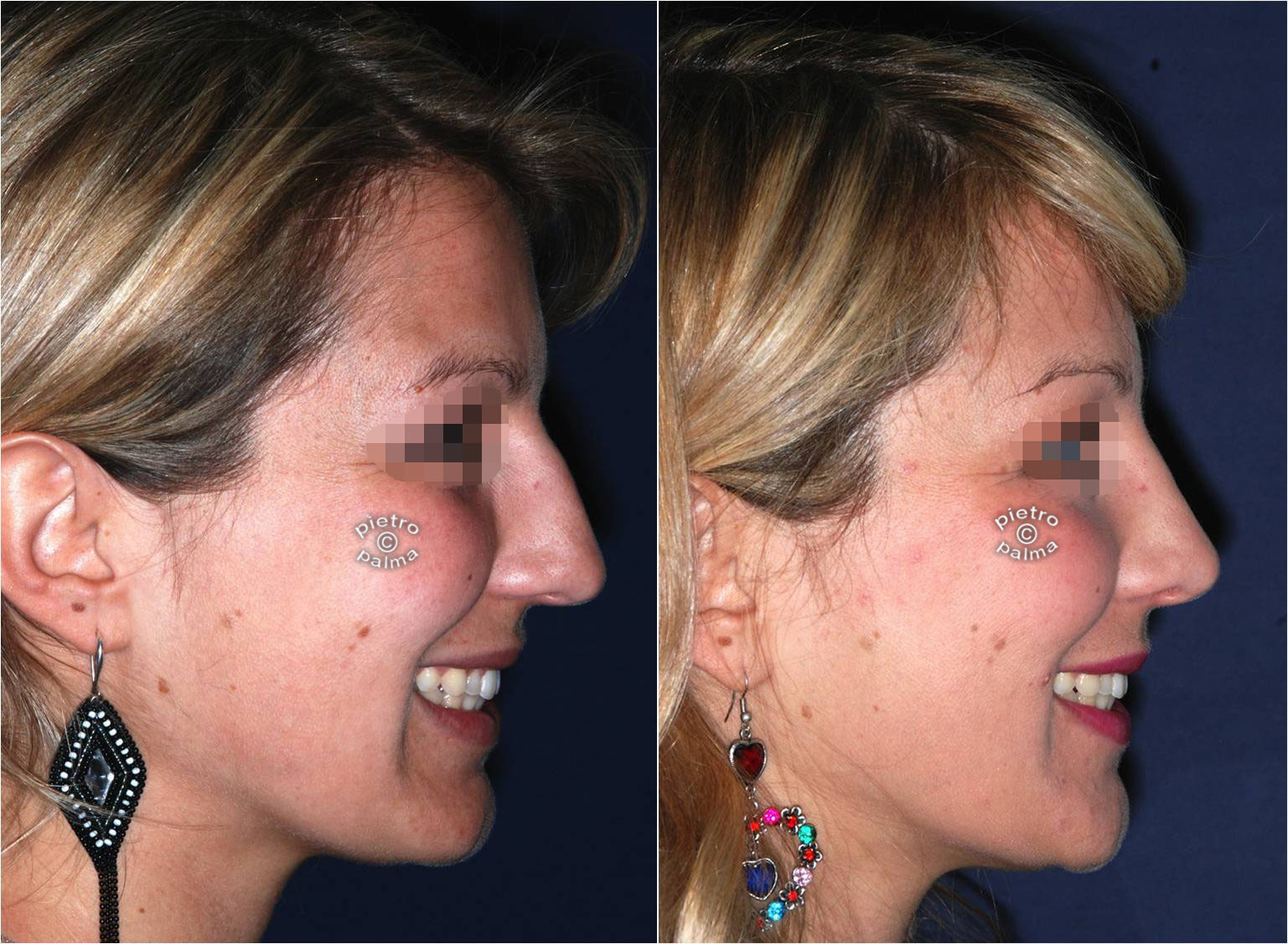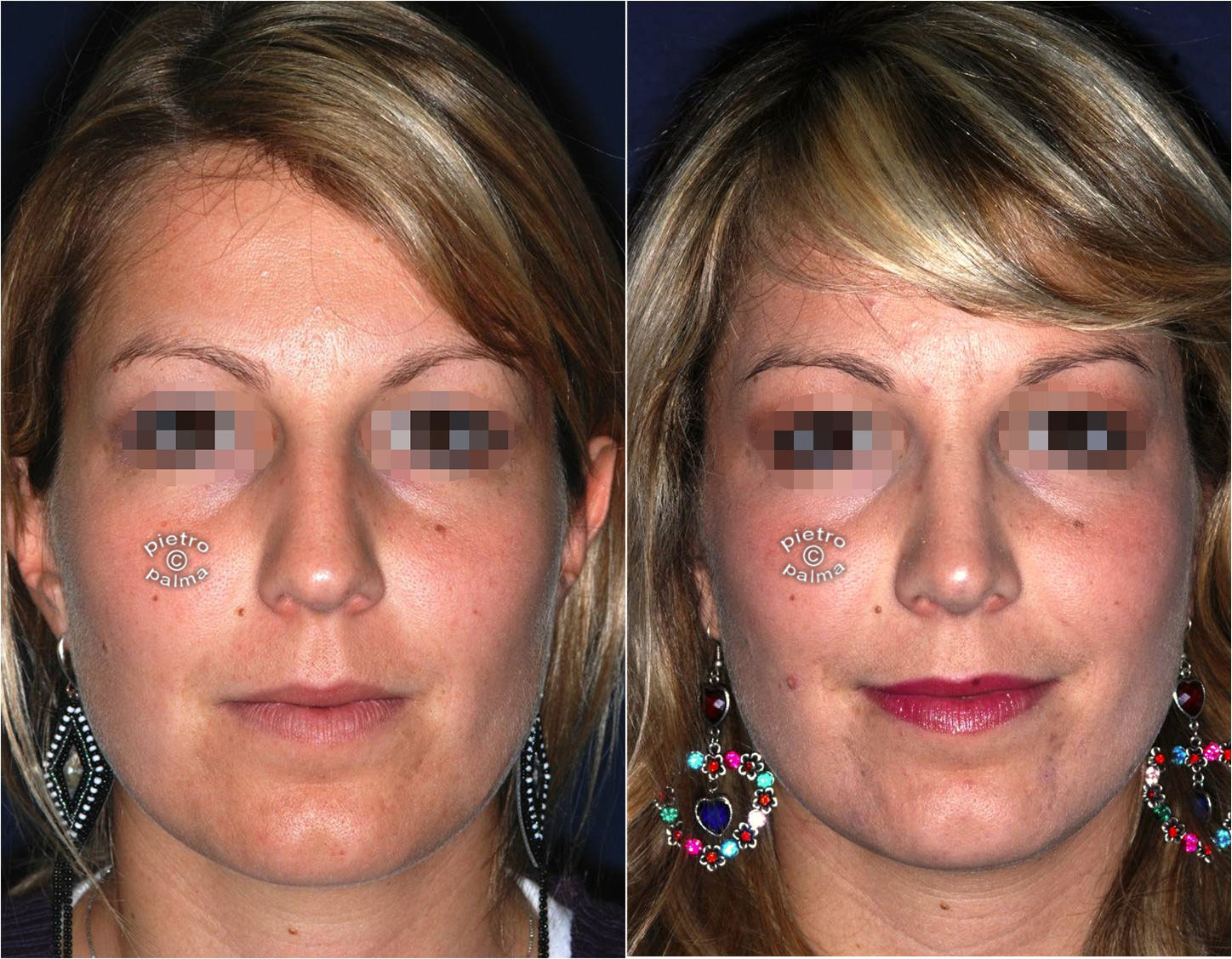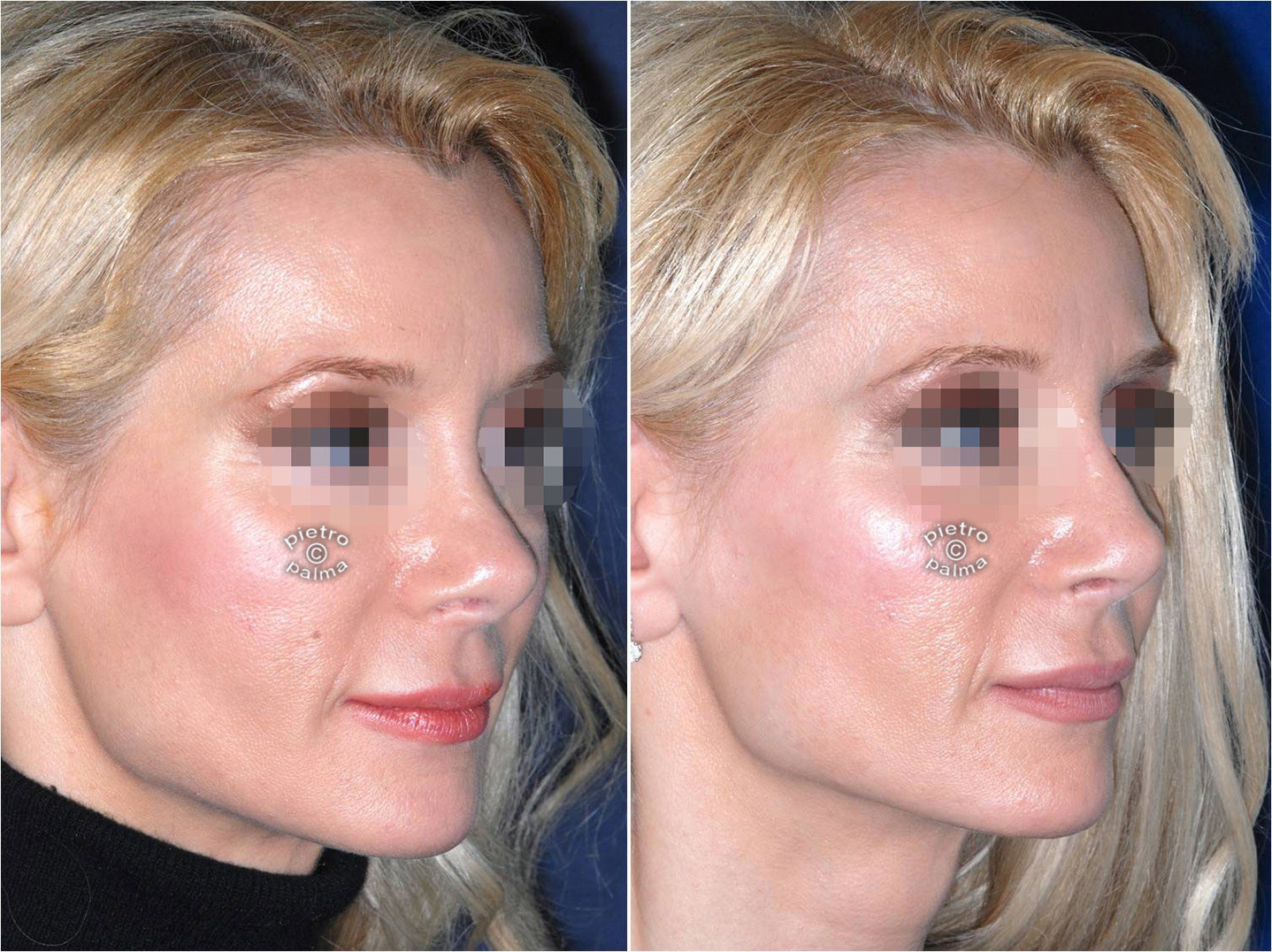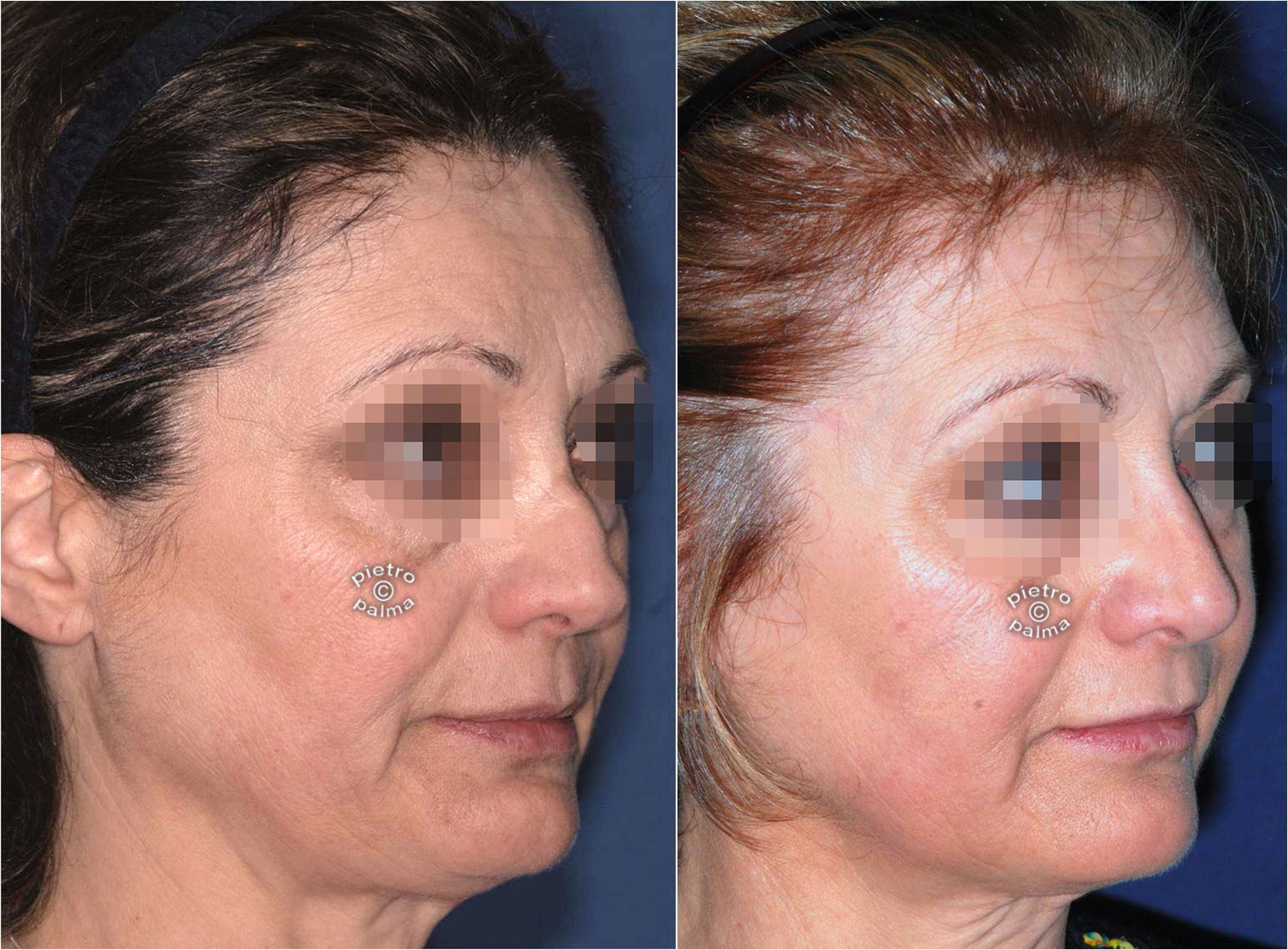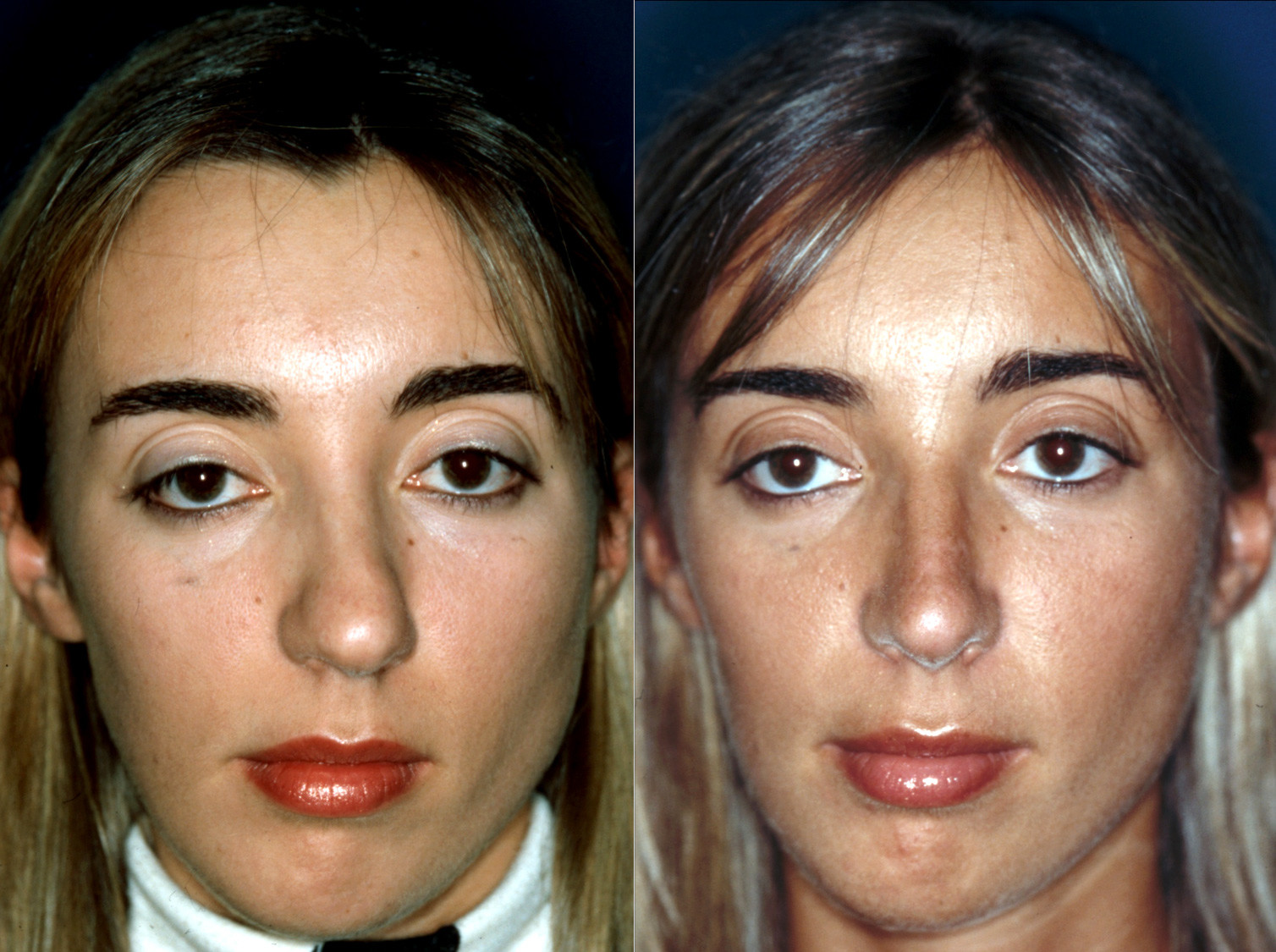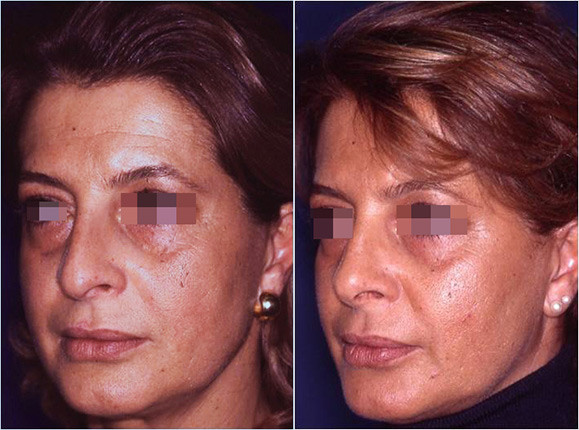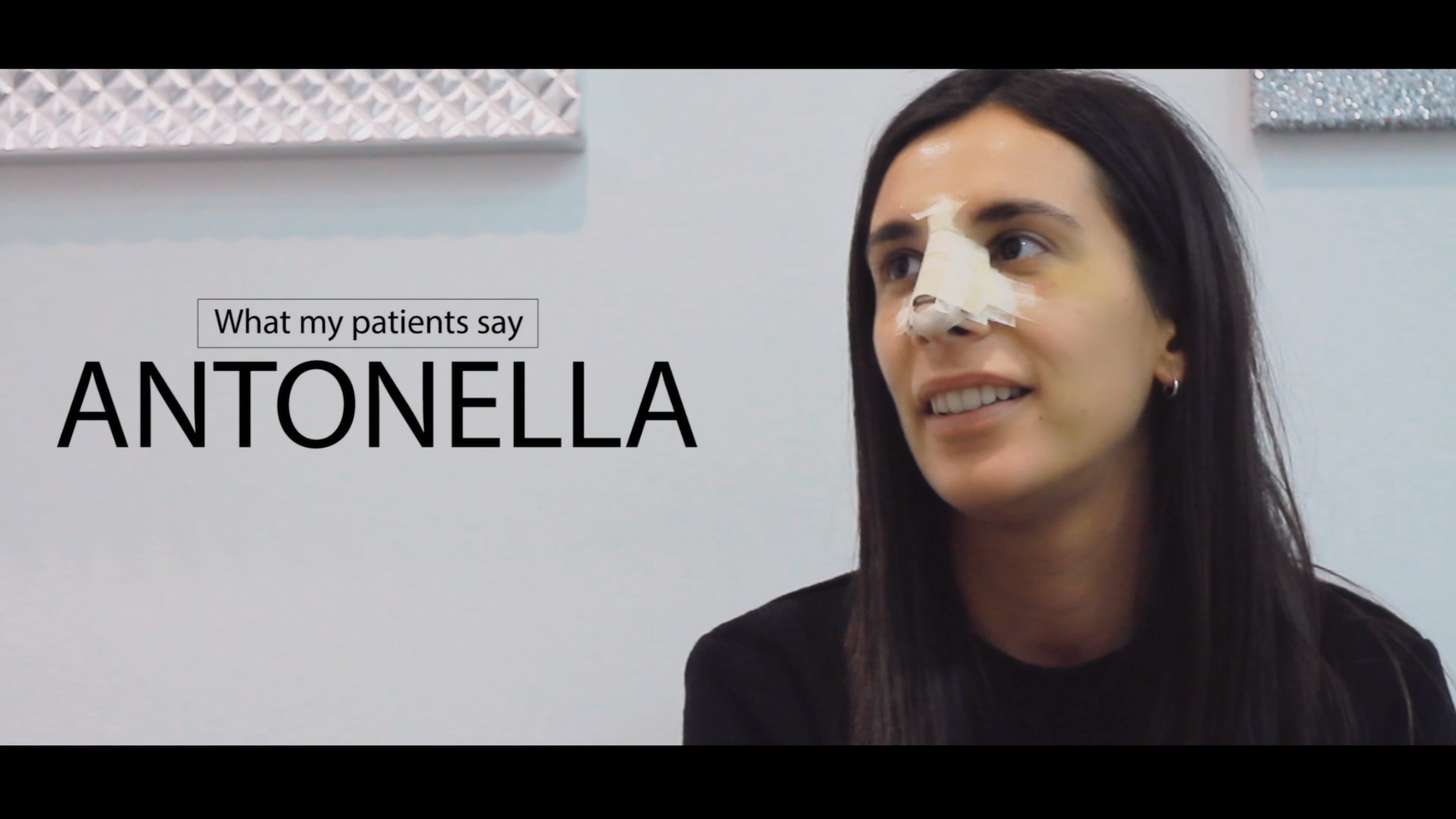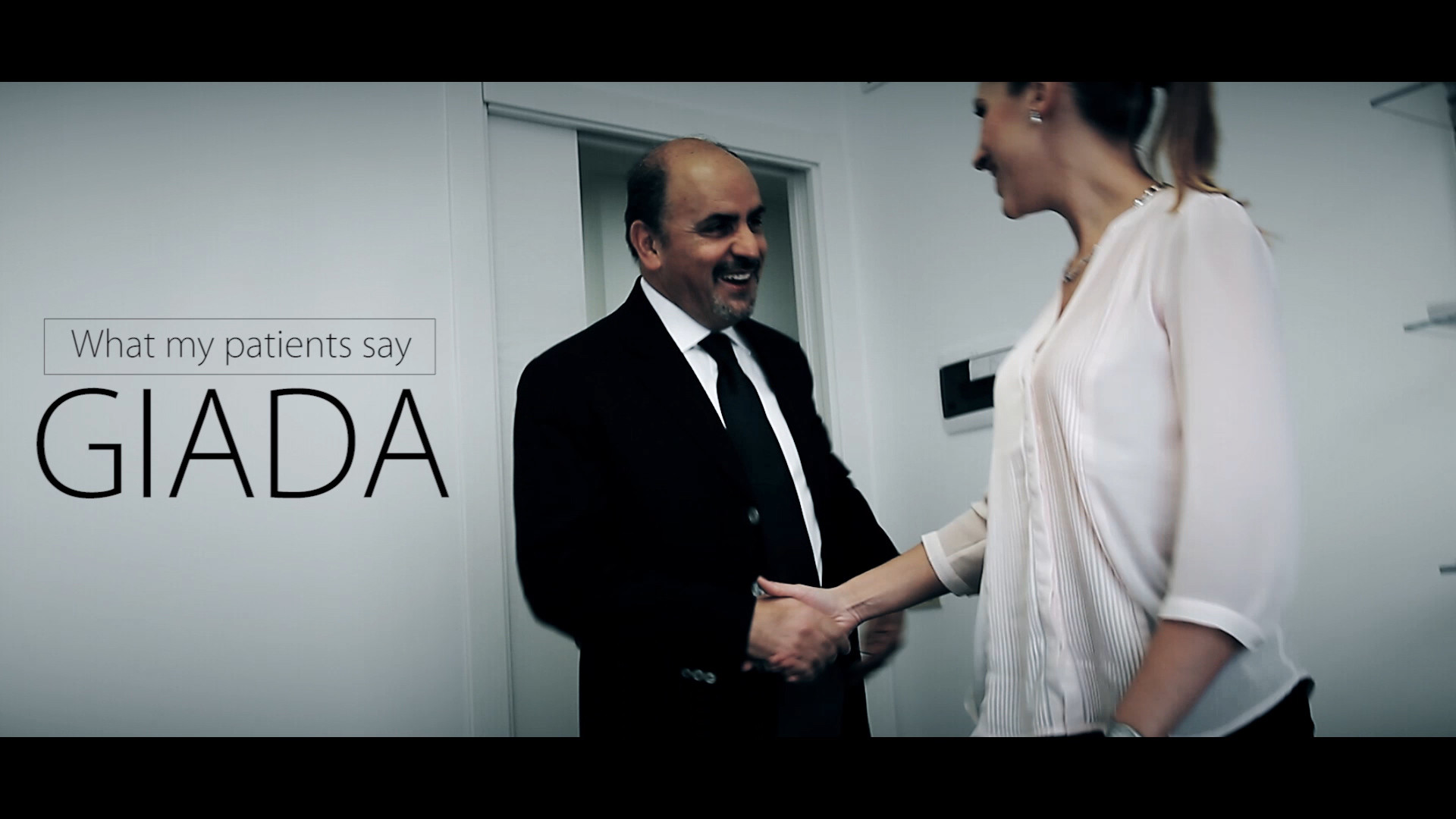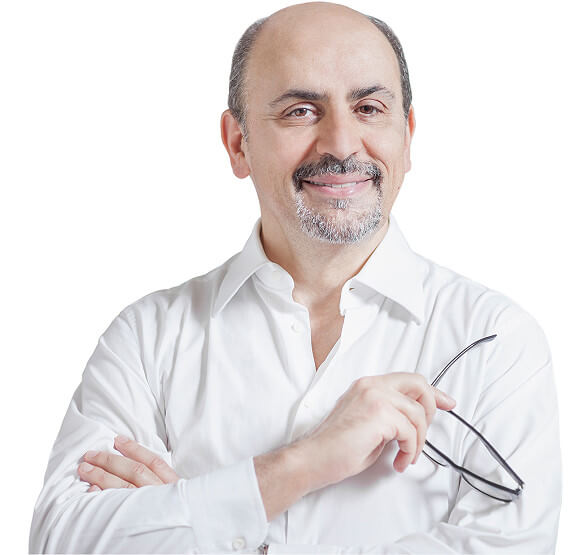What is primary rhinoplasty?
Primary rhinoseptoplasty refers to the first surgical correction of the nasal structures considered in chronological order. The surgical procedure can address many different issues at the same time. Defects can be aesthetic and/or functional (among the most frequent: nasal obstruction, shortness of breath at night and sleep apnea, ear problems such as muffled hearing, alteration of the timbre of the voice, etc.), and have a congenital or traumatic cause. Nowadays, the surgical standard is aimed to manage and to improve both the appearance and function of the internal and external nose. From this point of view we are speaking about the complex operations that require extraordinarily specific and sophisticated surgical skills as well as the ability to select the most suitable technique to restore the proportion of the nose and harmony of the facial features. In the following paragraphs we will briefly talk about the open, closed and hybrid approaches in rhinoplasty. Just to summarize, primary rhinoseptoplasty can address and modify:
a) nasal bony pyramid,
b) cartilaginous dorsum,
c) cartilages, ligaments and muscles of the nasal tip.
Defining secondary rhinoplasty.
Secondary rhinoseptoplasty aims to correct the appearance and function of the nose after a previously done surgery. The reasons to go back to the surgeon for a second nose job can be linked to three fundamental causes:
- The result of the first operation was below the patients’ expectations or even caused cosmetic or respiratory defects;
- Previous surgery did not resolve completely the nasal problems;
- The patient suffered a post-surgery trauma.
Reshape the nasal structures: open, closed or hybrid technique?
In a simple way, we can divide the surgical techniques in rhinoplasty in two main types of procedures: the external or open technique (primary open rhinoplasty) and the closed or endonasal technique (primary closed rhinoplasty).
In the last decades, the studies and researches of Dr Pietro Palma gave birth to a new philosophy and concept in rhinoplasty – hybrid rhinoplasty, which benefits from the advantages of both approaches. Hybrid rhinoplasty, described by Dr Palma in the literature for the first time in 2010, allows to combine the precision of the open technique with the mini-invasiveness of the surgical maneuvers of the closed approach (endonasal technique).
1. Open rhinoseptoplasty: pros and cons
In open rhinoplasty, the surgeon does a cut on the columella and then lifts the skin-soft tissue flap to reach the nasal structures. The open technique offers a complete view of the osteocartilaginous vault. Relatively easy access to the modifying area under full vision control often makes less experienced surgeons feel more comfortable in this approach, so they tend to follow it.
Summing up, the advantages of an open primary nose job are:
- better view and operative space in complex remodeling and cartilage suturing, especially in tip rhinoplasty for the major asymmetries, bulbous tip, pinched nose, bifid tip, deviated, poorly projected, etc.
On the other hand, the disadvantages of the open technique comprise:
- generally longer operating and healing times;
- absence of the tactile feeling, as well as the immediate perception of the surgical result of the corrected anatomical area;
- the greater destabilization of the nasal supporting framework requires the use of cartilaginous grafts also from the extranasal sites (ear, ribs), which in turn increases the risk of complications also in these donor areas;
- more evident stiffness and swelling of the external nose which can persist for months;
- formation of the excess fibrous scar tissue, especially within the tip area, which can result in less defined or squat tip shape;
- less natural result and permanent columellar scar (however this risk is minimal, if the technique is performed correctly);
- greater technical complexity in case of possible revision surgery.
2. Closed nose job: pros and cons
In a closed rhinoplasty, the surgeon makes the initial incisions inside the nose and then exposes the anatomical structures to correct from inside without “opening” the nose. It was considered that endonasal technique is very appropriate for correcting small defects, especially in the tip and it is less ideal in managing of the bigger osteocartilaginous vault defects. However, in skilled hands excellent results can be achieve in correcting complex deformities even with the closed technique.
Advantages of a closed primary rhinoplasty are following:
- a generally more conservative and delicate approach, which can usually give a more natural and less “surgical” look;
- average shorter operating and healing times;
- no risk of visible external scar as all the incisions are internal.
The disadvantages of the closed technique are:
- less visibility of anatomical structures which could lead potentially to the less precision of maneuvers (especially by not experienced surgeon);
- less effectiveness in complex and extreme surgical cases which usually require advanced reconstructive procedures.
3. Hybrid technique: the evolution of nasal surgery
We can consider the closed and open techniques as two conventional procedures for a primary rhinoplasty. For more than ten years now, we have had a third option that summarizes the advantages of both. Hybrid rhinoplasty allows the surgeon to identify the critical areas to manage and, thus, apply a tailor-made set of endonasal incisions to correct these precise areas. No external columellar incision. No massive dissection. No degloving of the osteocartilaginous pyramid. Only tailor-made endonasal incisions and precise tunneling. This highly versatile approach can be tailored to the patient’s specific anatomy.
The key advantages of the hybrid rhinoplasty are:
- visibility of the surgical field and technical precision substantially comparable to the open technique;
- less invasiveness and faster healing thanks to:
-
- the absence of external scars;
- minor impact on the lymphatic drainage especially of the nasal tip;
- less dissection of the external nose, limited only to the areas to be corrected without disturbing the others.
- greater accuracy and precision in the execution of surgical maneuvers: the tailor-made cuts allow the surgeon to act exactly where needed;
- lower incidence of the adverse effects and complications, therefore better satisfaction rate and lower incidence of revision.
Your surgeon for a primary rhinoplasty in Milan
Patients wishing to improve the appearance of their noses are increasingly curious about surgical procedures. Some even choose the surgeon based on the technique described or most valued on the web pages – not the best decision-making process! However, we must point out that there is no technique absolutely superior to the others or capable of guaranteeing a 100% success.
The countless individual variables of every anatomical structure together with the pitfalls and difficulties of each surgery require customization in design and versatility in execution. This is what we call a tailor-made nasal plastic surgery. Think carefully and have a wise approach making a decision of having nose job done and try to choose the best rhinoplasty surgeon. But how can you choose the best surgeon for your nose? You should take into account these two main aspects:
- the ability of a surgeon to select the operative technique most appropriate for your case;
- the surgeon’s technical skills and capacity to adapt the whole operating plan to the targeted defect(s), anatomy and wishes of the patient.
Don’t expect less than a thorough pre-operative visit before the surgeon can determine which surgical technique and procedure could be applied in a better way to reach all the aesthetic and functional goals of your primary rhinoplasty.
Both primary and secondary rhinoplasties require vast and extensive skills, long and in-depth experience, extreme specialization and continuous professional self-mastery. If you want to change the look of your nose or to correct respiratory defects, contact the best primary rhino-septoplasty surgeon in Milan. In almost 30 years of specialized surgical practice, Dr Pietro Palma and his team helped many patient looking for male and female rhinoplasty, adolescent rhinoplasty, and revision rhinoplasty of different complexity (including cases of extreme rhinoplasties) to “come back to themselves”.
Be yourself. Be true. YOU.
